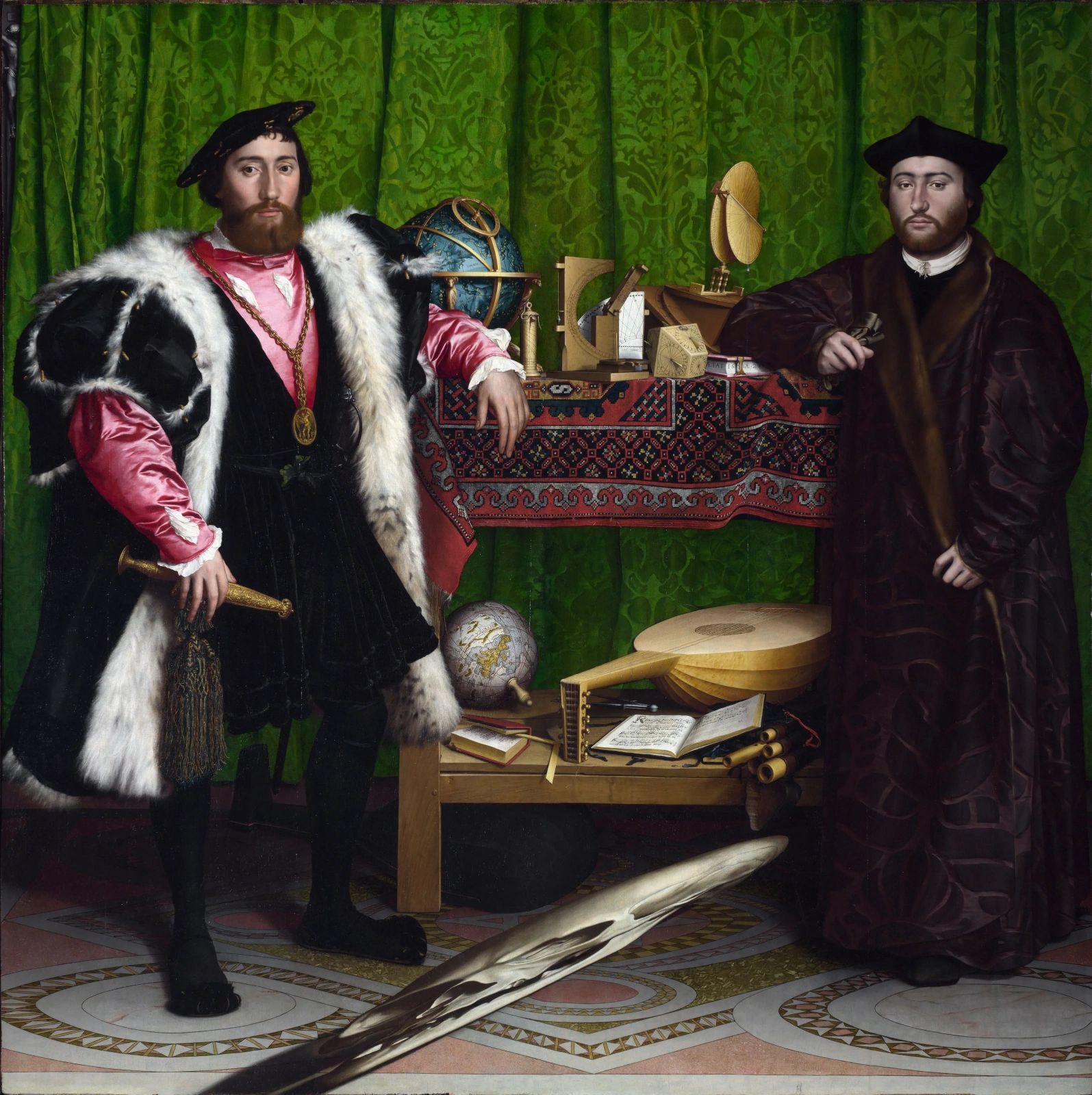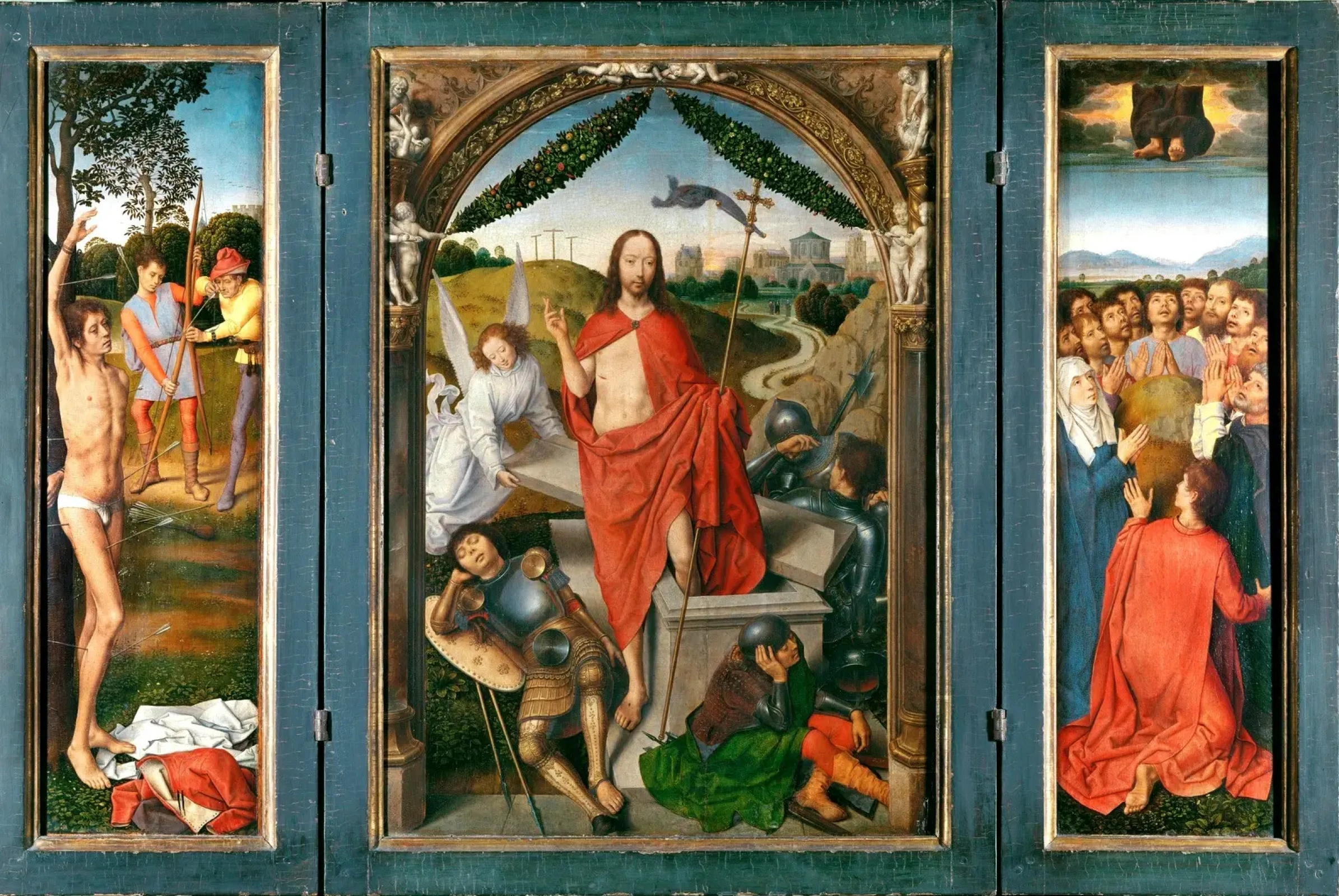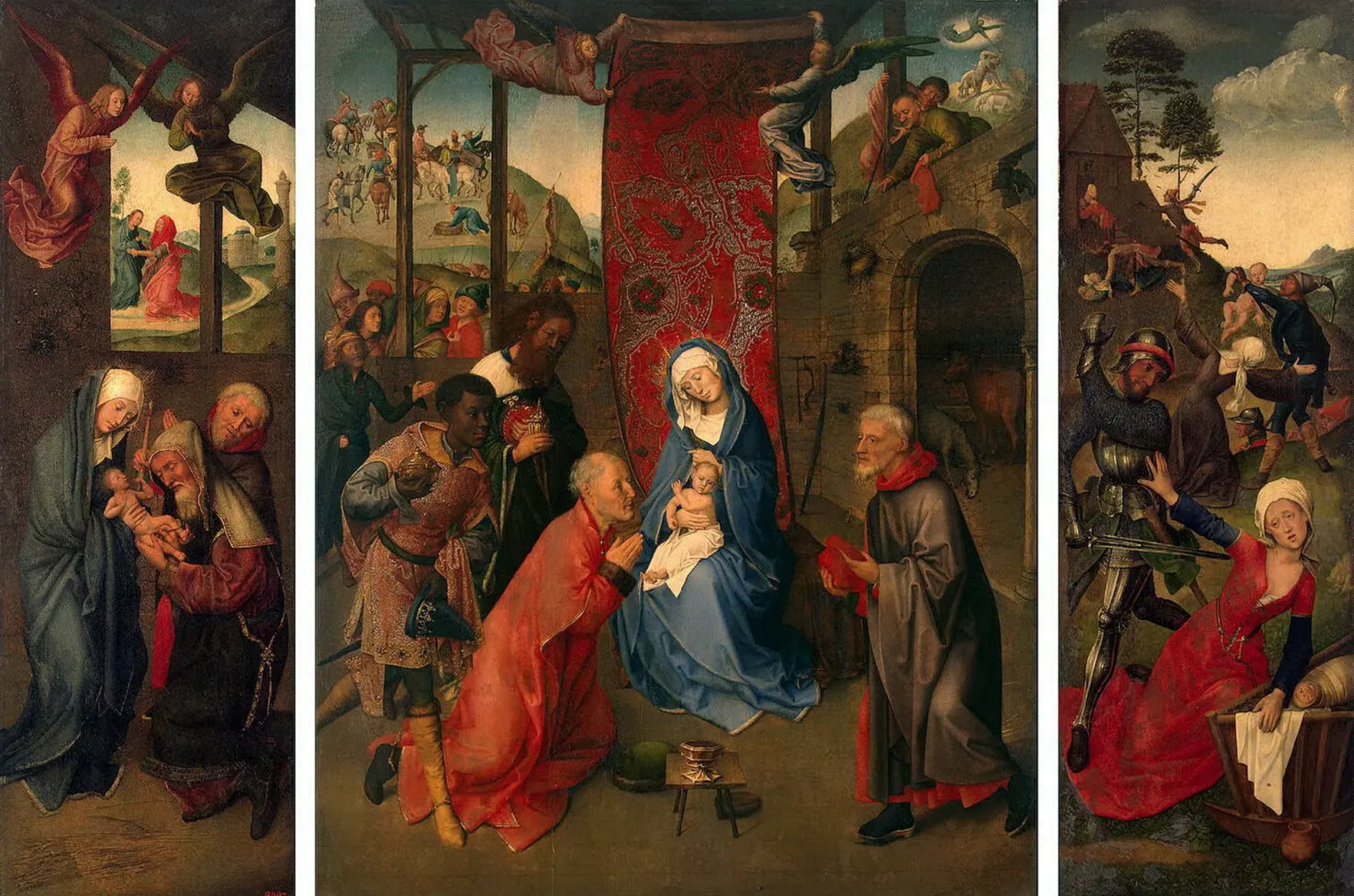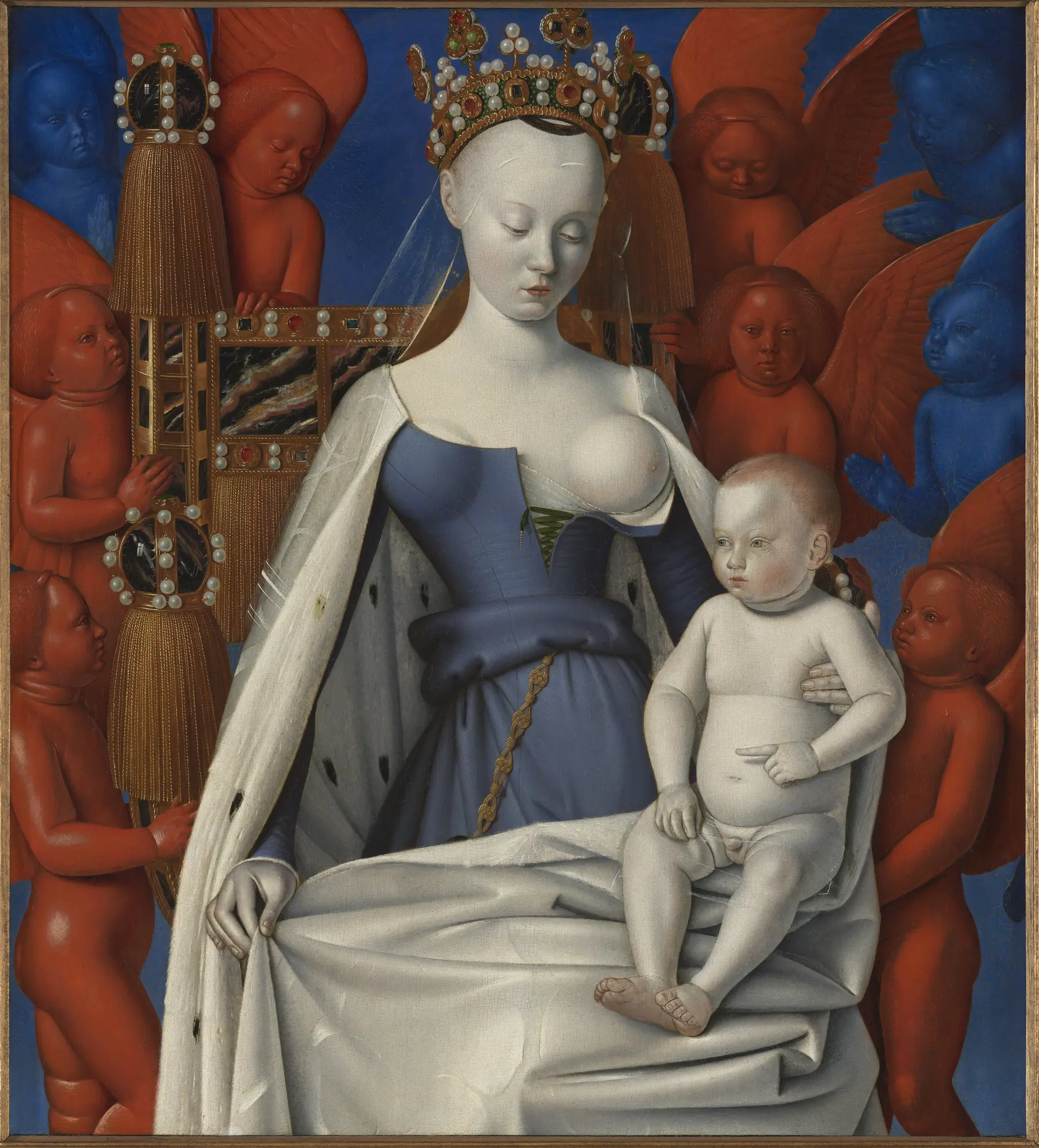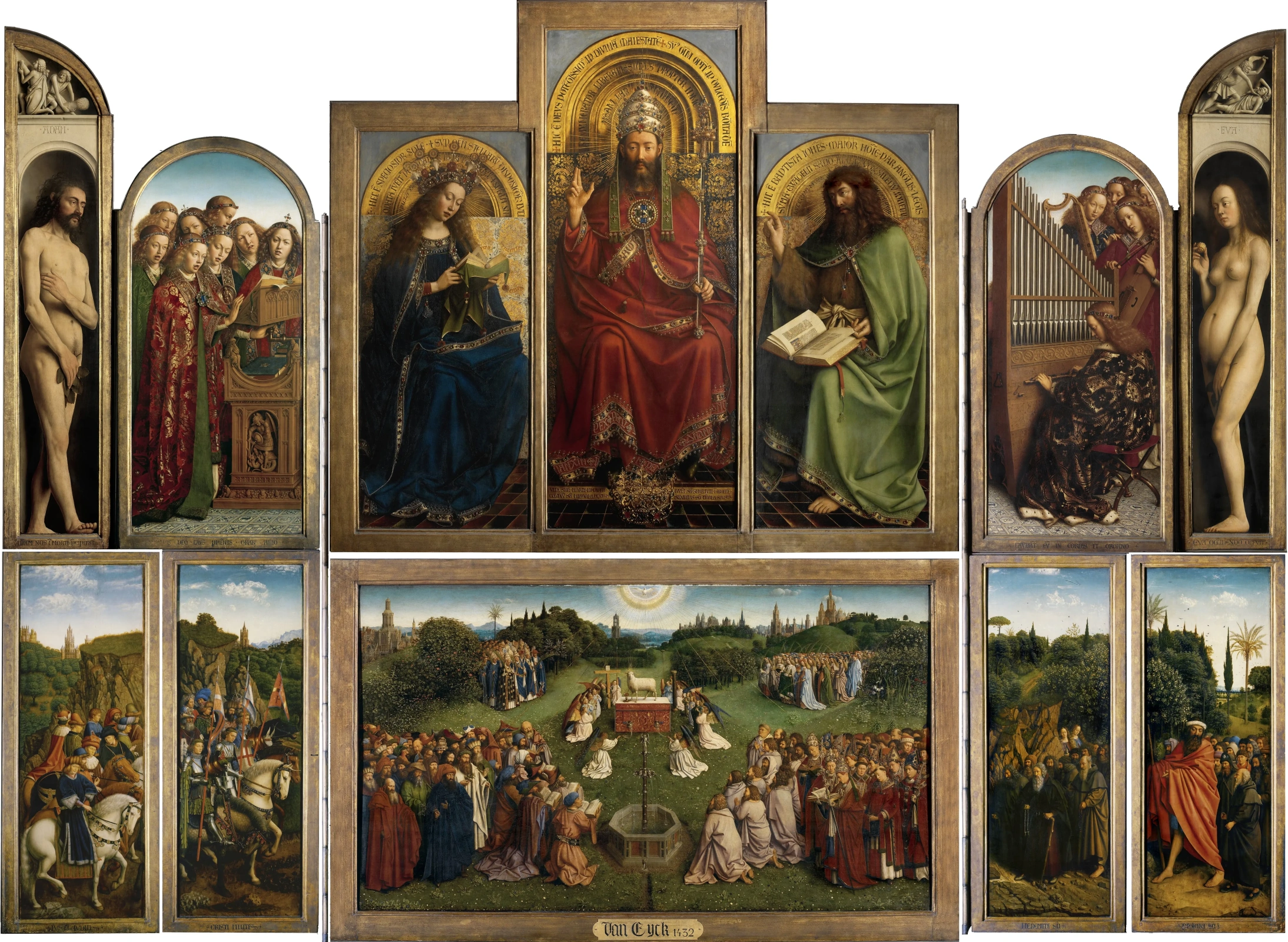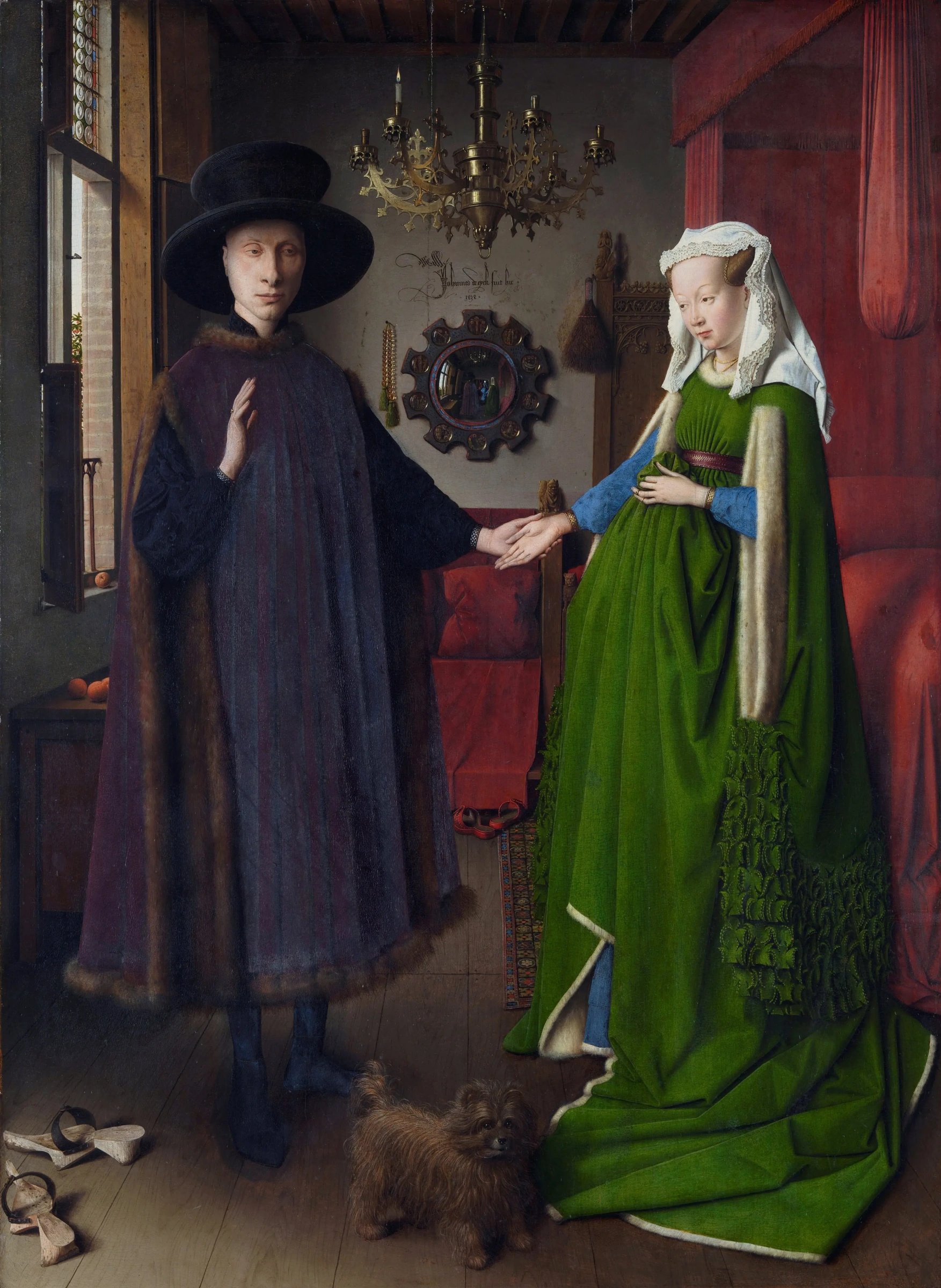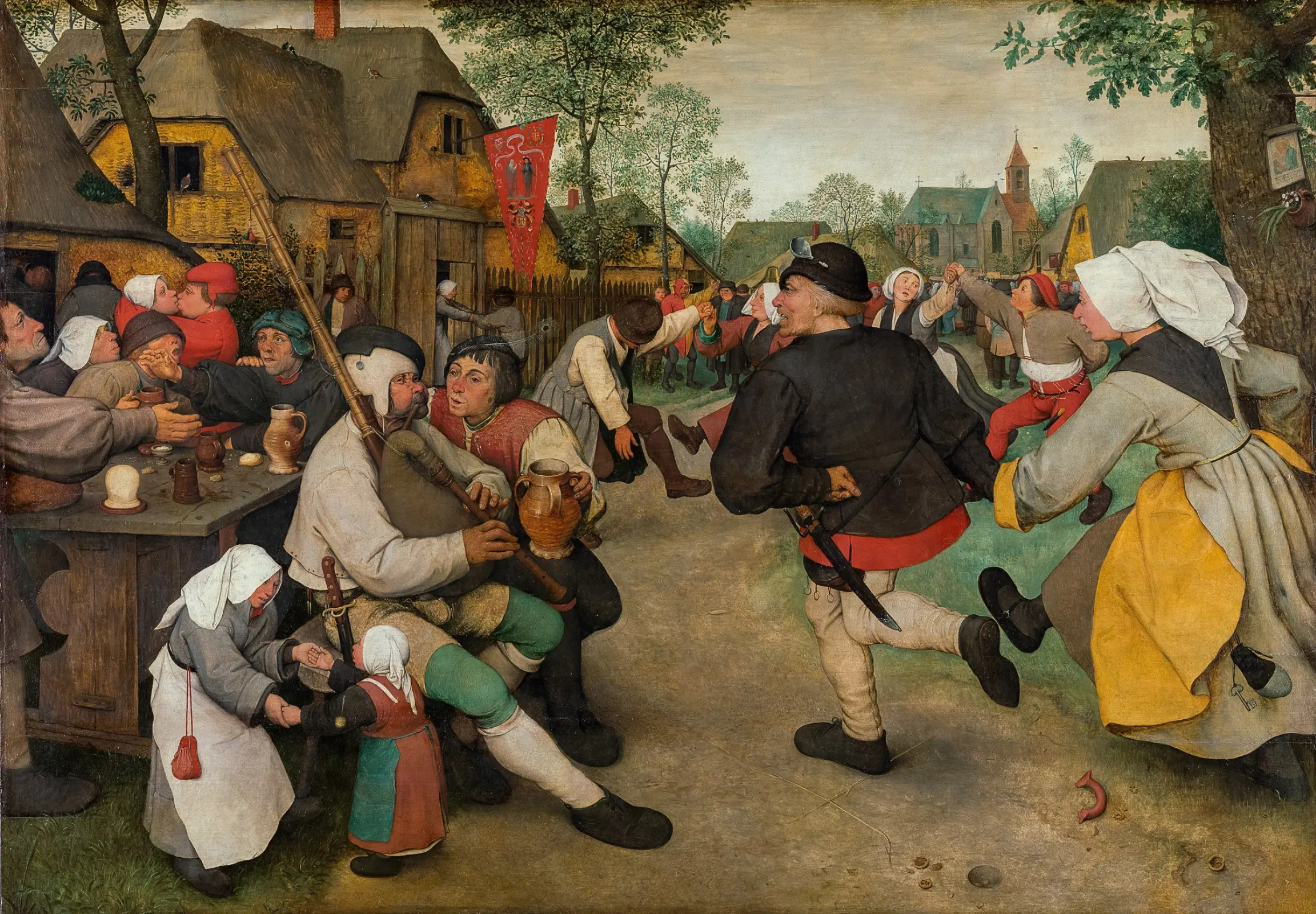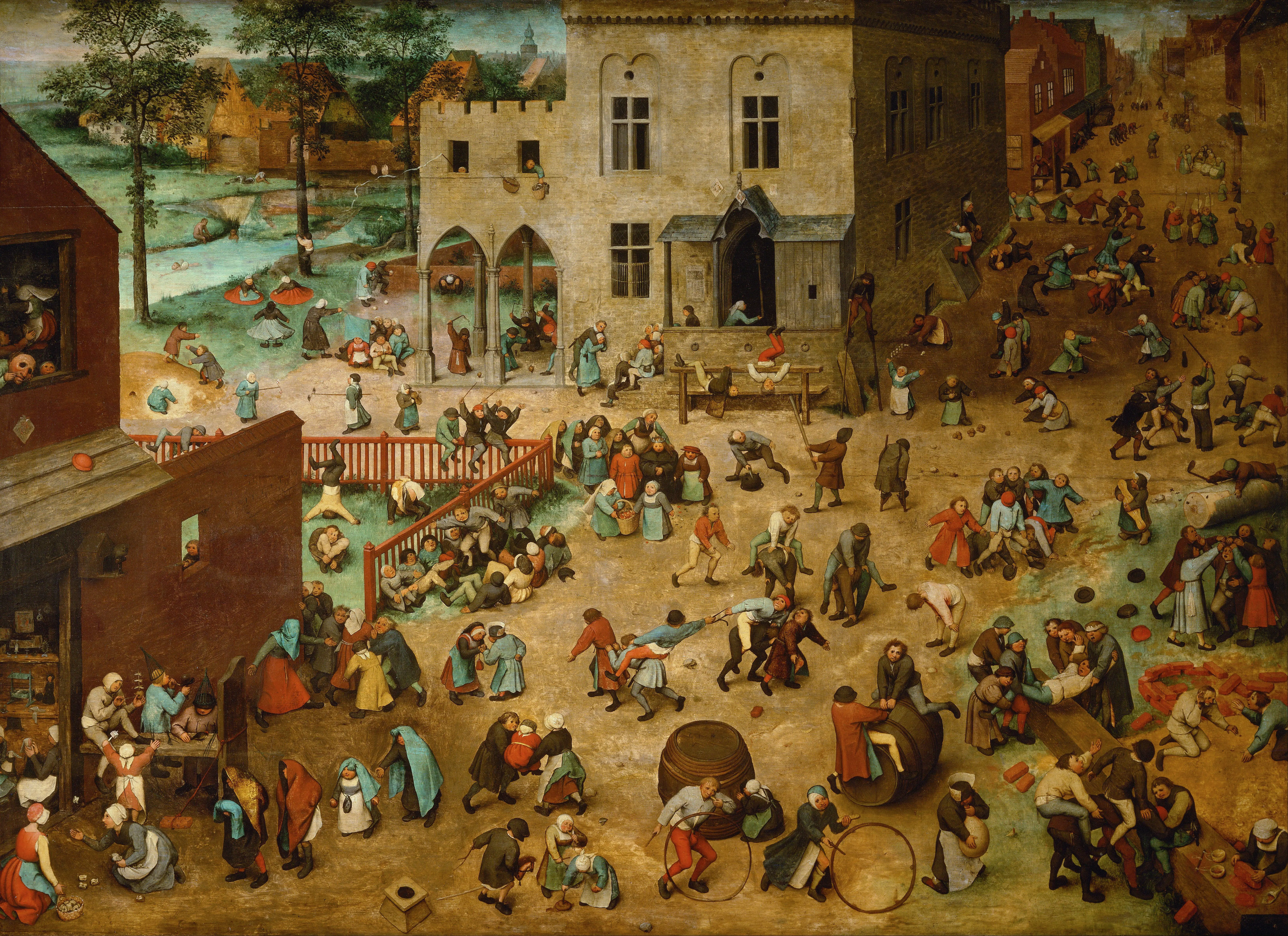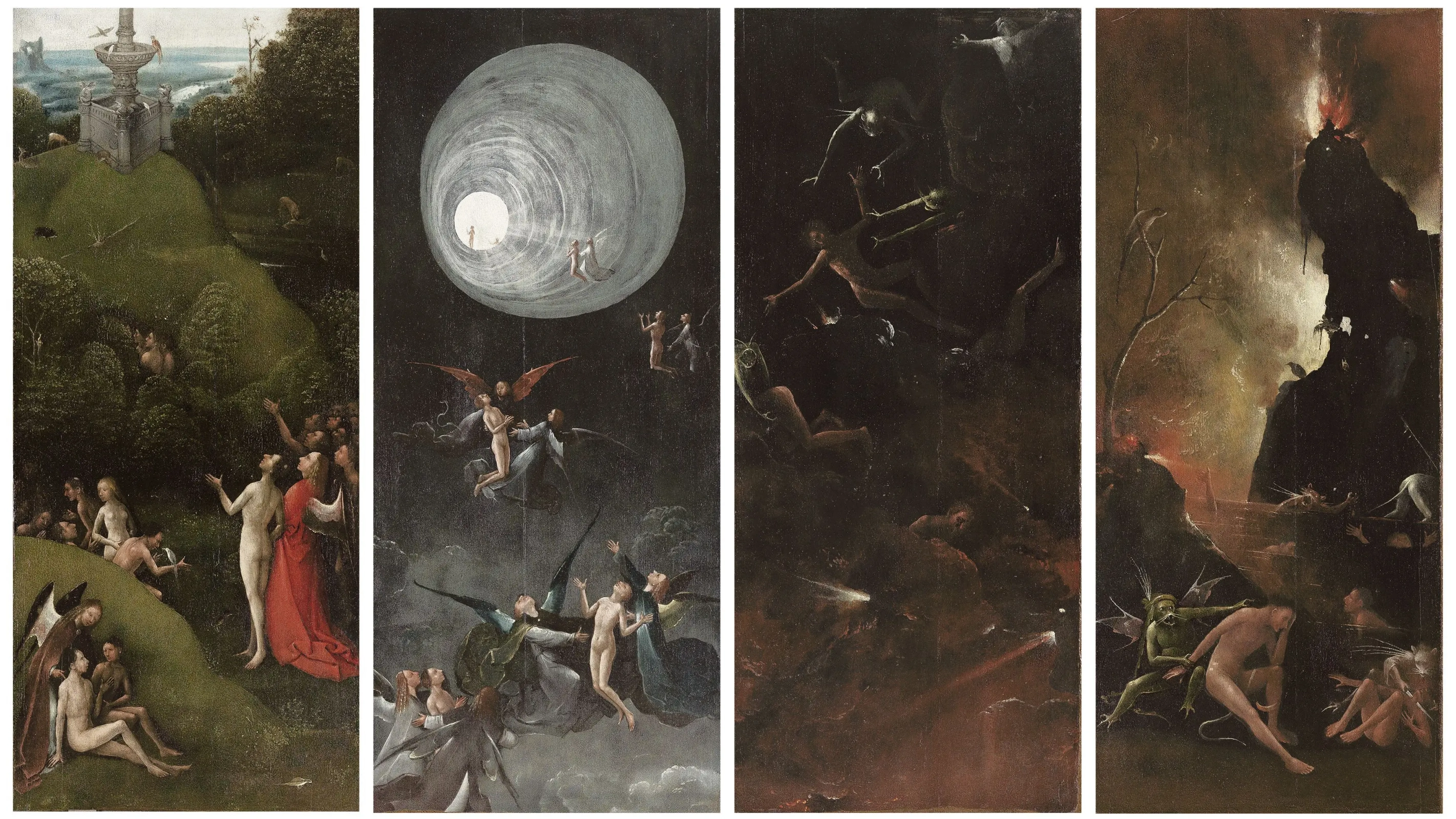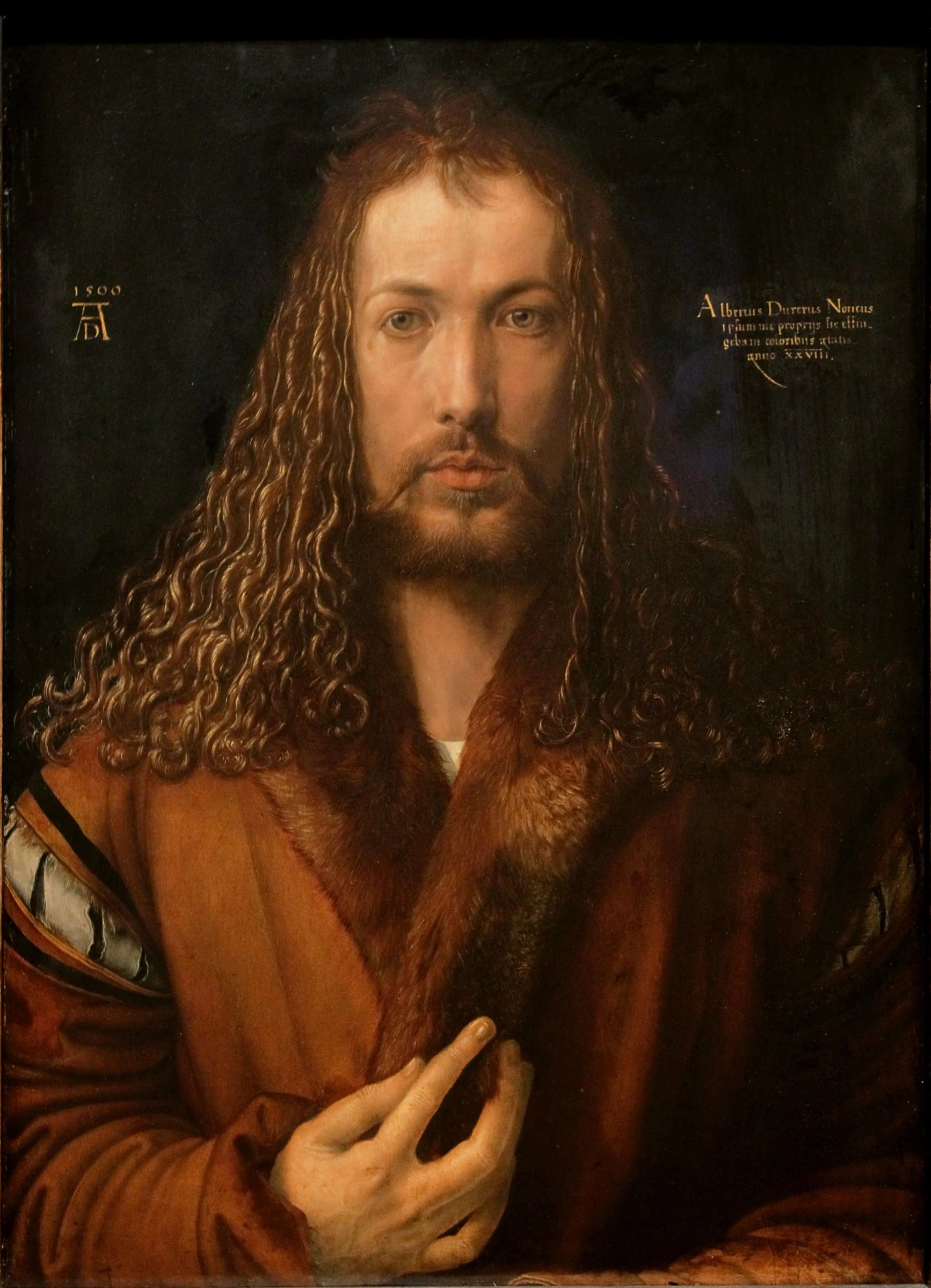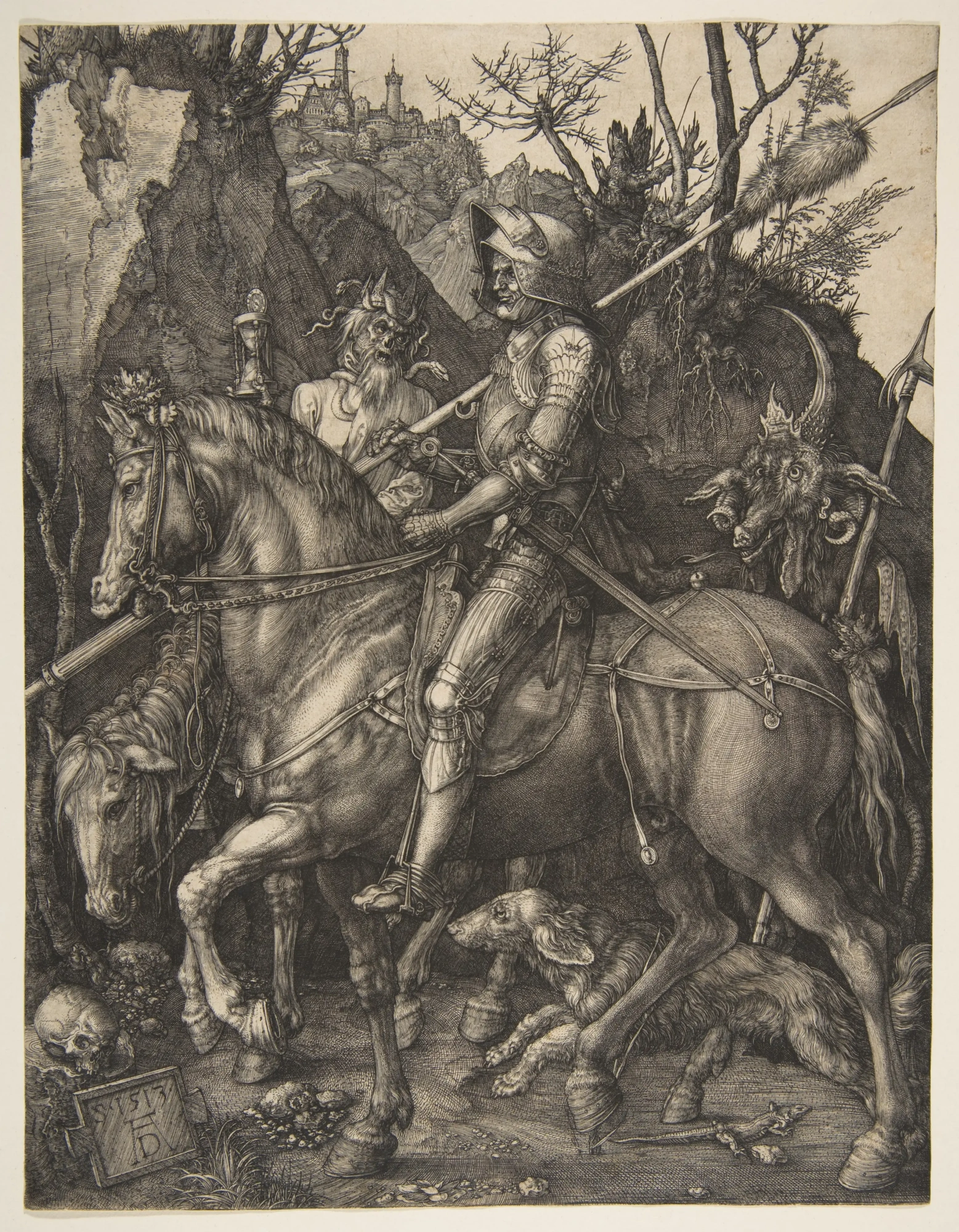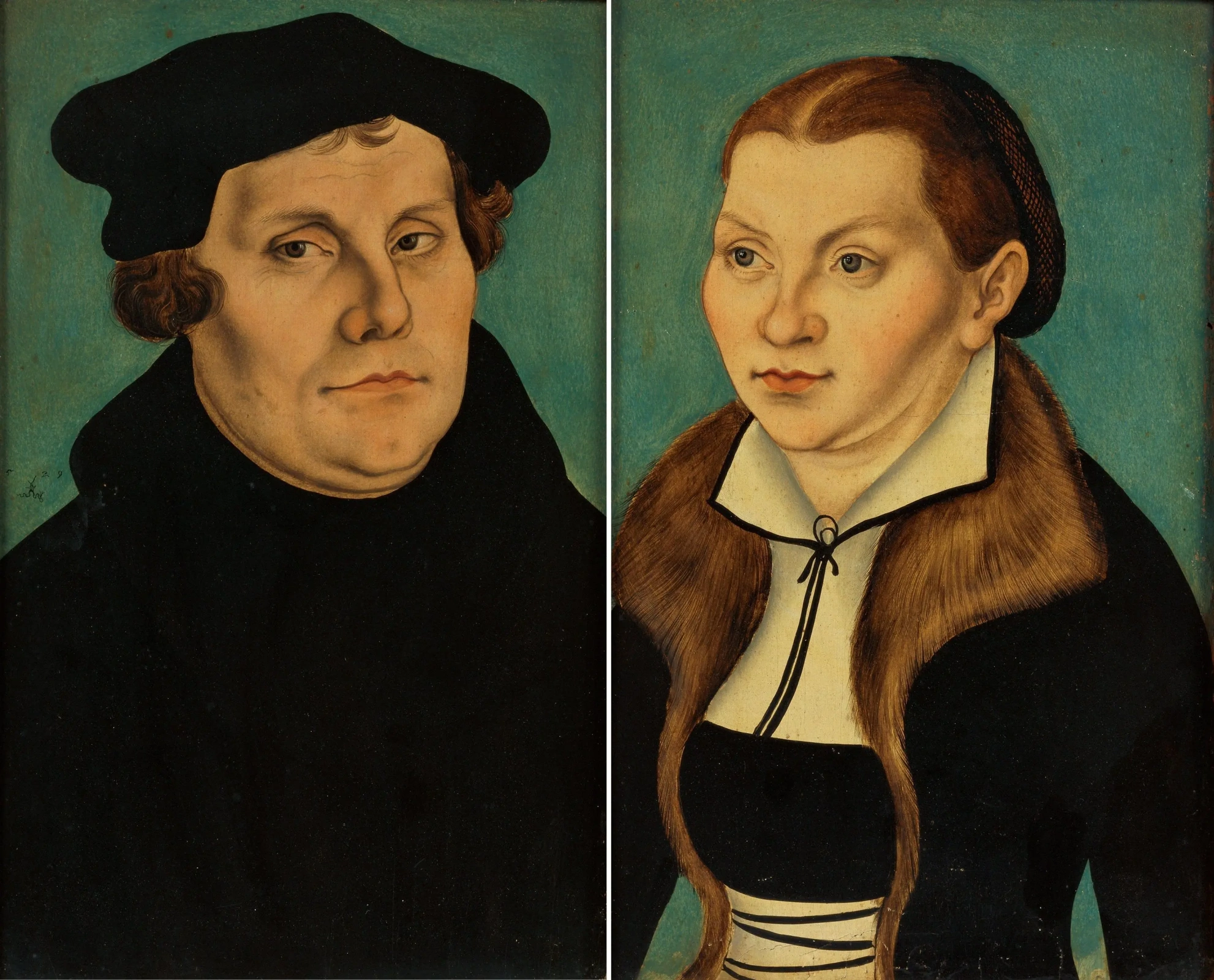Northern Renaissance

The first countries to turn to the Renaissance ideals were Germany and the Netherlands. Then the Northern Renaissance spread to France, England, Switzerland and Spain.
Ambassadors (Portrait of Jean de Denteville and Georges de Selva)
Northern Renaissance artists
The Northern Renaissance manifested itself in architecture, painting, literature, philosophy and science; however, the most outstanding achievements of this era relate to painting. Among the most notable painters are the Dutch and Flemish Jan van Eyck, Hugo van der Hus, Rogier van der Weyden, Hans Memling, Hieronymus Bosch and Peter Brueghel. In Germany, the representatives of the Renaissance movement were Albrecht Dürer, Lucas Cranach the Elder and Hans Holbein, in France, Jean and François Clouet, Jean Fouquet, and the Dumoustier dynasty.
Features of the Northern Renaissance
The Renaissance became the starting point of humanistic development, spiritual rethinking of antiquity and religious transformations. Unlike Italy, the religious renewal played a dominant role in the countries of the Northern Renaissance. The paintings of the northern countries had their unique expressive features.
— In contrast to the Italian Renaissance, which drew inspiration from antiquity, the northern artists acquired more from the Gothic heritage, namely its archaism, symbolism and religiosity.
— The subjects were based on Christian beneficence and humility. This largely influenced the Reformation and the birth of Protestantism.
— A significant place in the Northern Renaissance painting belonged to nature as the personification of the divine principle. Living and dead nature as a symbol of connection with God, harmony, finiteness and infinity of life were embodied in such genres as landscape and still life.
— The Northern Renaissance is characterized by high detail that gives incredible realism, and at the same time, some neglect of anatomical certainty.
The Madonna and Child. Right wing of the Melun Diptych, 1450-th
The famous Virgin and Child (1451) by Jean Fouquet is the right panel of the Melun diptych kept in the Royal Museum of Fine Arts (Antwerp). It is generally accepted that Agnes Sorel, the mistress of the French King Charles VII, was the prototype; by the way, she was the King’s first official mistress, who later made friends with the Queen so much that she became her maid of honour. The most beautiful woman (according to the unequivocal statement of her contemporaries, including Pope Pius II), she gave birth to the king’s three children and died during the birth of the fourth one. Perhaps this painting was commissioned in remembrance of her.
Jan van Eyck
Jan van Eyck was the founder of the Renaissance in Holland. His largest work is the Ghent Altarpiece, begun by the artist’s elder brother Hubert and completed by Jan Van Eyck in 1432. Despite the obvious Gothic features, the Ghent Altarpiece became a landmark work of the Northern Renaissance — van Eyck managed to convey the complex religious symbolism through surprisingly believable, tangible images.
Van Eyck became one of the first major portrait masters in Europe. In his portraits, rigor is combined with amazing expressiveness, as, for example, in the first European pair portrait of the merchant Giovanni Arnolfini with his wife — the image is symbolic and restrained, at the same time this portrait is full of intimacy and lyricism.
The altar compositions Madonna of Chancellor Rolin and Madonna with Canon Van der Paele demonstrate the harmonious unity invented by Van Eyck — portrait, landscape, still life and interior complement each other, revealing the endless beauty of the universe.
The Ghent altarpiece, Jan van Eyck, 1432, 350×461 cm
As one of the first artists to master oil painting, van Eyck created Flemish multilayer painting. This method of applying thin, translucent layers of paint allowed the artist to achieve incredible depth and brightness.
Van Eyck’s work not only largely determined the development of Dutch painting in the future, but also influenced Italian masters such as Antonello da Messina.
1434, 82×60 cm
Peter Bruegel
Peter Bruegel the Elder was an excellent artist, illustrator and draftsman. In the 1550s he visited Italy, and in 1563 he settled in Brussels. In his works, religious subjects intertwined with everyday ones, which allows us to consider the artist as the head of the democratic direction in Dutch painting development. Reflecting hidden meanings and filling his work with symbols, Bruegel turned to the cultural experience and everyday life of his people. Bosch’s grotesque and fantastic freakishness greatly influenced monumental compositions and the picture of chamber subjects from Brueghel’s peasant life. Note that the breadth of composition and tonal unity of Brueghel’s painting laid the foundation for the national Dutch landscape.
1568, 114×164 cm
A website called "Inside Brueghel" was created for a grand retrospective in Vienna, which launched in 2018 to commemorate the 450th anniversary of the death of the Northern Renaissance master (the date is on 2019). The Museum of Art History in Vienna owns the world’s largest collection of works by the founder of the Brueghel dynasty. The museum collection includes 12 panels. The website makes it possible to examine the masterpieces in the smallest detail, as well as view their photographs taken by means of reflectography, infrared macro photography and x-rays. The site with the images is available after the ending of the exhibition.
1560, 118×161 cm
Hieronymus Bosch
Hieronymus Bosch spent his entire life in 's-Hertogenbosch in northern Flanders. His striking multi-figure compositions based on sayings, parables and proverbs combine grotesque, folk-satirical and moralizing features. Bosch’s works are both naive and sophisticated, traditional and original.
1500-th , 220×390 cm
A charming sense of mystery, known only to the artist, made Bosch famous far beyond the borders of his native city — the king Philip II of Spain was also among his admirers. Bosch is an amazingly modern artist, his vision influenced expressionists and surrealists.
1490-th , 73×52.2 cm
"Doctor Who. Who Was Hieronymus Bosch In Reality?", "Who Knows? Bosch Knows. The Garden Of Earthly Delights Zoomed In"— read these publications on Arthive.
1516, 86.5×158 cm
Albrecht Dürer
Albrecht Dürer is one of the big legends of the Northern Renaissance. Influenced by Italian humanistic thought and the late Gothic, this great German painter, graphic artist and art theorist combined expressiveness, philosophical principles, glorification of man as the crown of divine creation and complex symbolism, which is clearly seen in his 1500 Self-Portrait.
1500, 67×49 cm
Dürer worked mainly on religious subjects; he lived in Nuremberg, but the fame of him as the most skilled engraver boomed throughout Europe, especially in Italy and the Netherlands. Engravings Melancholy, Knight, Death and the Devil and Saint Jerome in His Study are the pinnacle of Dürer the draftsman.
1513, 25×19 cm
Lucas Cranach the Elder
In his works, the German artist Lucas Cranach the Elder addressed to a variety of subjects, bizarrely combining both ancient traditions and the Gothic interpretation of the human body and landscape. The founder of the Danube School, Cranach became famous for the harmonious combination of landscape and human figure.
1540, 116×170 cm
The artist lived in Austria and the Netherlands, was a supporter of the Reformation and often painted portraits of his friend Martin Luther.
1535, 62×89 cm
In all areas
The Northern Renaissance affected many countries and was expressed in a variety of forms. So, François Rabelais, a great writer, humanist, doctor and botanist created his works in France. In his novel "Gargantua and Pantagruel", saturated with folklore and humour, Rabelais dealt with issues of enlightenment and humanism, which opposed dark medieval morality. Other themes of the novel are politics, social structure, war; today this novel is rightfully considered the encyclopaedia of the French Renaissance.
In England, the main figure of this era was the great William Shakespeare, whose tragedies, comedies and sonnets had a key influence on the development of European drama. Cervantes, the author of the famous chivalrous novel Don Quixote, was a Spaniard. As in Italy, in northern Europe, the Renaissance became an era of scientific discoveries, including the heliocentric model of the Universe proposed by the Polish astronomer Nicolaus Copernicus.
========================================================
